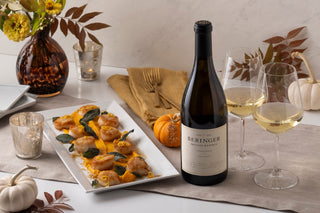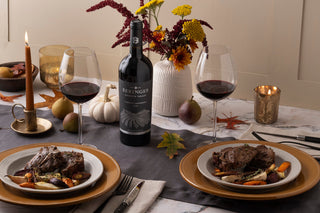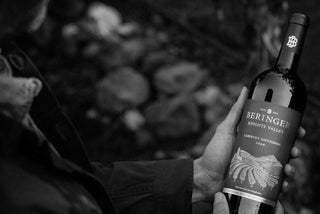Explore the world of Cabernet with a Beringer Knights Valley blind tasting.
Why is Knights Valley known as "Cabernet's Best Kept Secret"? Because while the cabernet grown there is rich and ripe, and the cool nights in the vineyard add just the right amount of acidity, most people have never heard of it. Half the fun of cabernet is seeing how different it can be and how it changes from region to region. If you're interested in doing a little exploring, use the tips below to host a blind tasting of your own.
Step 1: The Selection
The first step in hosting a blind tasting is choosing a theme. This makes it easier to compare the wines and pick out what you like and don't like. A few themes you could try include:
Region: How does a wine grown in Knights Valley, like Beringer Knights Valley Cabernet Sauvignon, compare to one grown in Napa Valley? Do the flavors change if you cross state lines or go to another country? Go on a tour to see which you like best.
Cost: Do you get a better wine when you pay more? Compare wines that cost different amounts, or three wines with the same price to see which gives you the most for your money.
Tasting Notes: Check the labels for similar aromas and flavors to see which wine does it best. Or choose wines with completely different tasting notes to see how much the flavors of a single grape can vary.
Step 2: The Set-Up
Prepare the space ahead of time to make sure you and your guests smell and taste the wines at their best.
Avoid Strong Smells: Flowers, scented candles, cooking smells, and even pet odors can affect the smell and taste of the wine. Choose a space that's clean and neutral to hold your tasting.
Uncork the Wine Early: Open the wines 25-30 minutes before you get started to fully release the aromas and soften the flavors. Cabernet Sauvignon is best when served at room temperature, so you don't need to worry about chilling it beforehand.
Cover the Labels: Place the bottles in brown paper bags or bottle sleeves and rearrange them so you don't know which is which. If you have a friends who won't be participating, ask him or her to rearrange the wines for you. Number the bags from 1-3.
Set the Table: Line up three wine glasses for each participant and number them 1-3 with a glass pen or sticky note. Pour one of the wines into each glass until it reaches the widest part of the bowl. Make sure the number on the bottle matches the number on the glass.
Step 3: The Tasting
Each wine tasting is comprised of four basic steps: See, sniff, sip, and savor. Let's get tasting!
1. SEE: Tilt your glass, look at the outer edge of the wine and ask:

-
- What color is it? Is it purple? Or is it ruby or garnet?
- Is the color intensity pale, medium, or deep?
- Do "legs" form when you swirl it?
2. SNIFF: Put your nose in the glass and inhale. Try it again after swirling the wine and ask:
-
- Do the aromas change with each sniff?
- How intense are the aromas?
- What aromas are you smelling?
3. SIP: Take a sip of wine and swish it around like mouthwash. Sip or swallow, and ask:
-
- What tastes can you identify?
- Does it taste the way it smelled, or is it different?
- How does the wine feel on your tongue?
4. SAVOR: Think about the wine. Go back over your notes and put it all together before you reveal the labels:
-
- What did and didn't you like about the wine?
- When would you enjoy this wine?
- Are there any surprise when you reveal the labels?

We hope you had fun hosting your blind tasting with "Cabernet's Best Kept Secret." Now, pour the rest of the wine, discuss what you learned, share a pic from your party on social, and keep on exploring the joys of Cabernet. Cheers!







